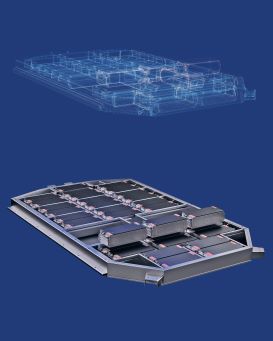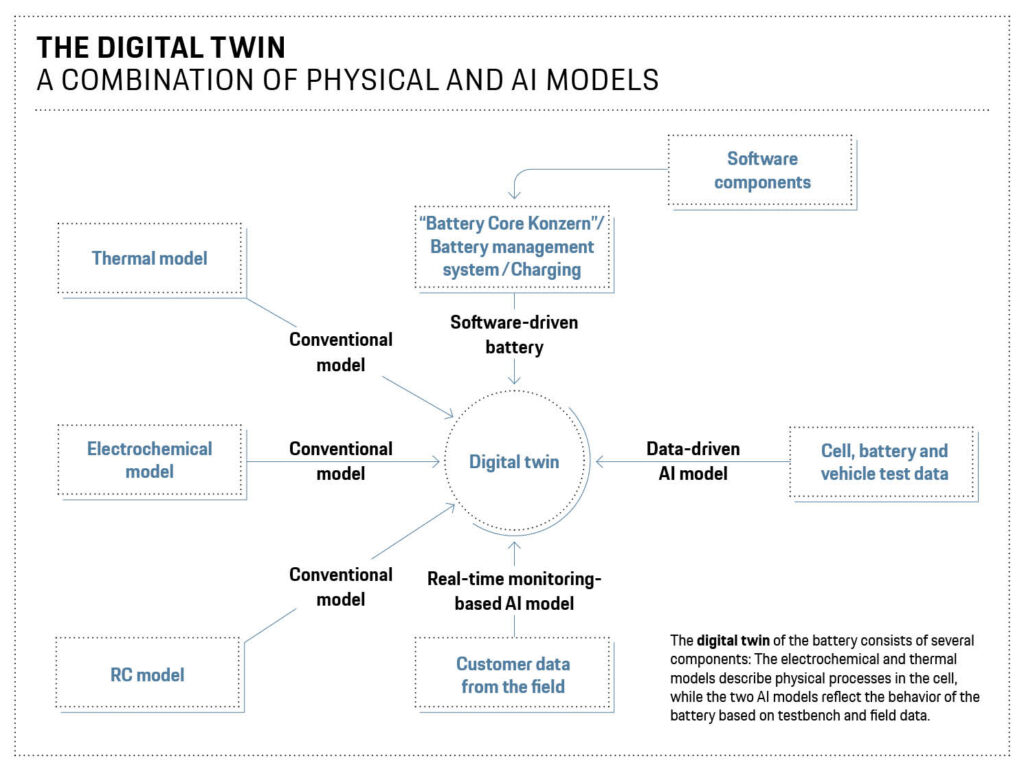
Porsche Engineers On Future of Digital Twin high-voltage Battery
London, June 18, 2024 , (Oilandgaspress) –––Batteries are crucial components of electric vehicles—not least because they significantly influence the residual value. OEMs and suppliers are therefore keen to understand the details of how battery cells and systems age and the impact that driving behavior / handling have on their service life. For this purpose, Porsche Engineering is developing a digital twin of a high-voltage battery.
How will a system for which there is no long-term track record behave in the future? The space agency NASA has grappled with this question for decades. Their probes, after all, frequently embark into unknown environments equipped with the latest technology. To better assess the life cycle of spacecraft, NASA researchers developed the concept of a ‘digital twin’ in the early 2000s: The real aircraft was replicated down to the most minute detail as a model in the computer, and was then used to play out the unknown scenarios—decades of travel, for example.

Porsche Engineering takes the same approach to optimizing the high-voltage battery of electric vehicles. “We need to understand how the cells will behave in the field over the long term—without being able to draw on many years of experience, as is the case for the combustion engine,” explains Joachim Schaper, Senior Manager AI and Big Data at Porsche Engineering. The Battery Digital Twin is intended to provide a glimpse into the future: The digital representation of the battery operates exactly like the original and provides information on the expected aging process. It can also be used to improve the service life and performance of the battery. AI experts from Porsche Engineering in Germany and the Czech Republic are therefore working flat out on the Battery Digital Twin.
With ever-rising demands on the durability of batteries, not least in the legal realm, the topic is very much front of mind. From August this year, anyone who puts batteries into circulation in the European Union has had to provide information on performance and durability in accordance with the new EU Battery Regulation (BATT2). The US state of California has already set minimum standards: From the 2030 model year, electric vehicles must still achieve at least 80 percent of their original range after ten years or 150,000 miles (241,000 km) of mileage. This is stipulated by the California Air Resources Board in its “Advanced Clean Cars II” regulation of November 2022. A similar regulation could apply in the EU in the future. It is therefore essential for OEMs to be able to provide precise information on the durability of vehicle batteries.
Information Source: Read More
Oil and gas press covers, Energy Monitor, Climate, Renewable, Wind, Biomass, Sustainability, Oil Price, LPG, Solar, Marine, Aviation, Fuel, Hydrogen, Electric ,EV, Gas,

